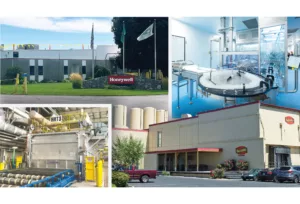
Home » Gold Reserve, Venezuela share optimism about Siembra Minera
Gold Reserve, Venezuela share optimism about Siembra Minera
Mine project is projected to generate $20B in profit
March 29, 2018
Spokane-based mining company Gold Reserve Inc. and the government of Venezuela have expressed optimism after initial test results in the South American nation show the Siembra Minera mine could prove to be as lucrative as the company has long believed.
Early estimates suggest that the entire mining operation, predicted to last 45 years, could generate more than $20 billion after taxes, Gold Reserve says in a press release issued March 19.
“This study confirms that the Siembra Minera project is one of the largest gold-copper deposits in the world with some of the lowest operating costs for such a large project,” says Gold Reserve President Doug Belanger.
Located in southeastern Venezuela, the mine is expected to be the largest gold mine in South America and one of the largest in the world, once it’s developed.
The government of Venezuela owns 55 percent of the company named Ecosocialista Siembra Minera S.A., while Gold Reserve owns the remaining 45 percent of the company.
The project is expected to be a conventional hydraulic shovel-and-truck, open-pit mining operation, the company says.
Gold Reserve says the project will feature two different mining plants, one, a 15,000-ton per day cyanidation plant and the other a 140,000-ton per day flotation plant.
Gold cyanidation is technique used to extract gold from minimum-grade ore. It’s the most commonly used leaching process for gold today.
The smaller plant—to be built first—will be designed to recover gold from such ore, which also contains low concentrations of copper. That plant will be designed and built during the next two years. The plant, related mining equipment, initial tailings dam, and supporting infrastructure will cost an estimated $295 million to develop, the company says.
The larger plant will be used to process hard rock material containing higher concentrations of gold and copper.
That mining plant is expected to take an estimated four years to complete, and production is expected to begin about two years after the small plant is built and operational.
The entire project is expected to cost $2.6 billion, the company says.
Gold Reserve is incorporated in Canada, but has its executive offices at 926 W. Sprague, in downtown Spokane.
The company says it invested $300 million into the Venezuelan project from the early 1990s to the time the project was expropriated in 2008, under the government of former socialist President Hugo Chavez.
Later in 2008, Gold Reserve sued the Venezuelan government for $2.3 billion, and the company secured an international judgment of more than $700 million against Venezuela in 2012.
In December 2015, a U.S. District Court in Washington, D.C., ruled against Venezuela as it sought to dismiss Gold Reserve’s international judgment award.
In August 2016, the mining company reached a settlement with Venezuela on a $777 million judgment secured after international courts ruled in favor of the Spokane company.
Gold Reserve maintains it will refrain from enforcing the arbitral award as long as Venezuela is current in its
obligations.
In addition to the payments for the mine itself, Venezuela previously agreed to buy Gold Reserve’s mining data for $240 million for what was previously known as the Brisas Cristinas project.
Latest News Real Estate & Construction
Related Articles


_web.webp?t=1764835652)
